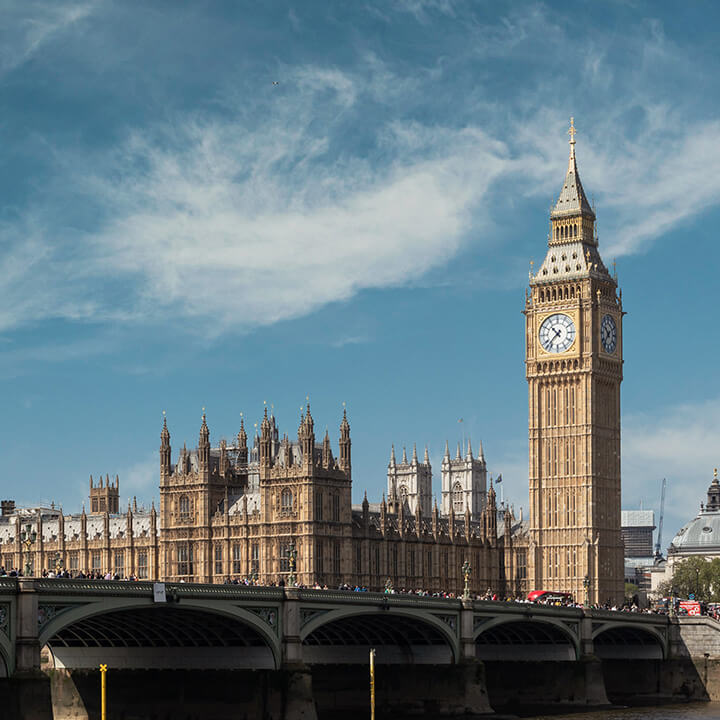The Employment Rights Bill: What you need to know
11th October 2024
“The Labour government made bold promises in its election manifesto about making the biggest upgrade to rights at work for a generation within 100 days of coming into power. It’s fair to say that that was always going to be an ambitious goal, and whilst the Employment Rights Bill sets out significant preparatory steps to radically overhaul key elements of the UK employment law landscape, these will in the main be subject to further consultation and detail established in regulations, meaning that practical changes on the big-ticket items are unlikely to take effect before Autumn 2026. That doesn’t mean employers should be complacent – the changes will significantly impact what we currently think of as “business as usual” HR decisions, and Boards in particular should have an eye on the key changes for workforce planning over the next two years.”


Read the latest updates to the Employment Rights Bill (March 2025) here.
Update as at 14 January 2025
We released the original article below when the Employment Bill was published in October 2024. Since publication, the government has carried out four consultations, from October to December 2024 in respect of: zero-hour contracts; collective redundancy consultations and “fire and rehire” practices; trade union legislation; and statutory sick pay. Further consultations on the other proposed changes will take place in 2025, so watch this space. There have also been some amendments/additions tabled and accepted to the Employment Bill (notable ones mentioned below). The Bill will continue through its various reading stages so further amendments may be made.
A brief update on the current state of play:
- Unfair dismissal (day one rights)
- Amendment to the Bill: The amendment makes it possible for the government to set a lower compensatory award cap for unfair dismissal awards during the ‘initial period’ of employment (we still wait to hear what the length of this period will be, but suggestions remain at 9 months as discussed in the article below).
- Zero-hours and minimum hours contracts
- Consultation: The consultation sought views on bringing agency workers within the scope of the measures requiring employers to make an offer of guaranteed hours to zero-hours and low-hours workers in certain circumstances. It questioned whether responsibilities and costs should fall on the end hirer (client) or the agency. Acas’s view is that the extension to agency workers could inadvertently drive businesses towards greater use of informal, less regulated forms of work, or result in the false classification of workers as ‘self-employed’ – something we are seeing a lot of concerns with in relation to the gig economy [2].
- Amendment to the Bill: The Bill provides that a guaranteed hours offer does not have to be made in certain circumstances, including the expiry of a limited-term contract where it was reasonable for that contract to be time-limited. The amendment adds a (rebuttable) presumption that it was not reasonable for the contract to be for a limited term if the work done under relevant contract was of the same or a similar nature as the work done by the worker under a (sufficiently recent) previous contract for the employer. The onus is then on the employer to show that it was reasonable for the contract to be time-limited for one of the reasons set out in the Bill or as may be prescribed in future regulations.
- Fire and rehire and collective redundancy
- Consultation: The consultation included seeking views on either increasing the protective award cap from 90 to 180 days’ gross pay, or removing the cap entirely. It also sought views on whether interim relief should be available to employees who bring claims for the protective award, so that they continue to receive their salary pending the outcome of the claim.
- Trade Unions
- Consultation: The consultation sought views on matters including unfair practices during trade union recognition, and the duration of industrial action mandates (extending the expiry of the mandate following a ballot from six to 12 months). Many of the consultation proposals were additional to the reforms in the Bill. Employer organisations, such as the GC100, have expressed concern that the proposals, combined with the reforms in the Bill, amount to a volume and pace of change which will be overwhelming for some employers, particularly smaller businesses.
- Statutory Sick Pay
- Consultation: The consultation sought views on the rate of statutory sick pay for lower earners, including those earning below the Lower Earnings Limit (to be calculated as a percentage of their earnings instead of a flat weekly rate).

There’s been a lot of publicity about the new Employment Rights Bill and – depending on which side of the fence you sit – a fair amount of excitement or panic.
Published on Thursday, 10 October 2024, the government has described its Employment Rights Bill as the “biggest upgrade to rights at work for a generation”. It certainly covers a lot of ground. However, and importantly, the majority of the reforms will not come into force yet. Apart from turning back the clock on minimum service levels in respect of industrial action (and certain other union matters) as soon as the Bill enters into force, the key changes dealt with below have no date for entering into force. Rumours are Autumn 2026.
It’s also fair to say the government’s self-inflicted urgency to introduce legislation within 100 days of coming into power – coupled with its significant majority in the Commons – has led to a large amount of the detail (and therefore certainty) being left to future regulations. Elements may change before the Bill enters into force as it goes through the parliamentary process, and we can expect lobbying from unions and employers (and employment lawyers!) alike given the significance of the changes proposed.
In light of that, and the fact the Bill is well over 100 pages in length, we have stuck to what you need to know right now.
Unfair dismissal
- As has been widely publicised, the two-year qualifying period for ordinary unfair dismissal purposes will be removed.
- The Employment Rights Bill does, however, build in the ability for future regulations to ‘modify’ the application of the unfair dismissal regime in ‘the initial period of employment’ on grounds of capability, conduct, illegality or some other substantial reason. While it is not clear what shape this will take, employers can expect some level of process to be required even in the initial period.
- Notably, if there is a redundancy situation in the initial period, there won’t be a ‘fast-track’ way of dismissing such an employee (i.e., ordinary unfair dismissal principles will apply).
- The Bill is silent on what the ‘initial period’ is or ought to be. The government has separately said it thinks it should be 9 months (and therefore more than the 6 months initially reported), but consultation will take place on this.
- As above, we anticipate this one won’t come in until Autumn 2026, so there’s a bit of breathing space to prepare for this one.
Zero-hours and minimum hours contracts
- The Bill includes lengthy and complex provisions on making a ‘guaranteed hours offer’ to zero-hours workers and workers contracted to certain minimum hours (which will be confirmed in future regulation). A large amount of the key details are left to be developed in future regulations.
- In essence, an employer will have to offer ‘guaranteed hours’ to such a worker where they have worked a minimum (but not yet confirmed) number of hours over a specific (but not yet confirmed) reference period. Given we’re missing these vital details, the full effect of the new regime is unclear.
- The hours the employer must offer to the worker must reflect the hours the employee has been working. The Bill leaves scope for regulations to require the offer to also reflect the patterns (including times and days) the employee has been working. A legitimate concern of employers will be how the law applies to industries where business (and therefore a worker’s hours) fluctuates, such as a Christmas peak followed by a post-Christmas lull.
- The remedy for failing to make a guaranteed hours offer where required will be capped at a number of weeks’ pay, to be confirmed in regulations.
- Importantly, this will only apply if the worker wants guaranteed hours – they are at liberty to reject it. Therefore, workers who are happy with a flexible approach do not have to change their engagement terms (although, as drafted, you would have to keep offering them guaranteed hours after each reference period (assuming they continue to qualify)).
- There are also further provisions conferring upon zero hours and similar workers the right to reasonable notice of a shift, and of cancellation or change of a shift, as well as the right to payment for a cancelled, moved or curtailed shift at ‘short notice’. Again, regulations will provide further details, for example, on what reasonable notice must be as a minimum, and what ‘short’ notice is.
Fire and rehire
- Prior to the publication of the Employment Rights Bill, many doubted how far the government would go to meet their promise to end fire and rehire.
- While not going all the way, the Bill will make it automatically unfair to dismiss an employee for not agreeing to a contract variation, or to simply dismiss them to enable you to re-employ them on different terms (i.e., without even trying to agree a contract variation), or to employ another person in their place.
- There is a very narrow exception to this, permitting dismissal where, broadly:
- the reason for the variation goes a significant way towards combating financial difficulties which (at the time of the dismissal) were affecting, or were likely in the immediate future to affect, the employer’s ability to carry on the business as a going concern or otherwise to carry on the activities constituting the business; and
- in all the circumstances, the employer could not reasonably have avoided the need to make the variation.
- The level of consultation and anything offered to the employee in return for agreeing the variation are also relevant to whether the employer can avail themselves of this exception.
- With fire and rehire now only permitted in such narrow circumstances, good dialogue with employees and representative bodies will be key to making contractual changes.
Duty to prevent sexual harassment and whistleblower protection
- As the government had previously indicated, the Employment Rights Bill inserts ‘all’ back into the soon-to-be-in-force duty to take reasonable steps (i.e., it will become ‘all reasonable steps’) to prevent sexual harassment. While the duty coming into force on 26 October will be limited to ‘reasonable steps’ while the Bill goes through Parliament, it would be prudent for employers to take all reasonable steps. To that end, thorough risk assessments and employee surveys should assist with identifying what steps to take.
- The Bill also envisages that regulations will be introduced in addition to the new EHRC Statutory Code, detailing what reasonable steps an employer may take.
- The Bill also makes sexual harassment a specific protected disclosure for the purposes of whistleblower protection.
Harassment by third parties
- The Bill reintroduces an obligation on employers to not permit a third party to harass their employees, which they must do by taking all reasonable steps to prevent it.
- This goes further than the old third-party harassment legislation, which required harassment of the employee to have already occurred on two previous occasions and, despite being aware of it, the employer didn’t take reasonably practicable steps to prevent it. It also has a larger impact than the incoming duty to prevent sexual harassment (even after the government has made it an all reasonable steps duty), as it would be a standalone claim an employee could bring following harassment by a third party.
- It may therefore be sensible to consider taking steps to prevent harassment which are commensurate with the steps you are taking to prevent sexual harassment in compliance with the incoming duty.
Flexible working by default?
- The Bill does not make flexible working the default position for all employees (query how that would even work). Instead, in addition to one of the usual grounds for rejecting a flexible working request, it must be reasonable to refuse the request. The employer will also have to set out why it was considered reasonable in its response.
- Notably, there is no change to the penalty for breach, which is 8 weeks’ pay (so it may not be as significant a development in practice).
- Many businesses will have already tackled an increase in flexible working requests since the pandemic, but this is only likely to continue. Hybrid ways of working should be embraced where possible and ensure that those who are working remotely are properly included in workplace meetings, discussions, training and the like.
- Employers should make sure they have a clear policy on dealing with such requests. Once the wording of the Bill is settled, that policy will need amending to reflect the change in approach by the time the Bill enters into force.
Family leave
- Paternity leave and unpaid parental leave will become day one rights (maternity leave is already a day one right).
- Bereavement leave will also not be limited to the parent/child relationship. Regulations must be made to set out the relational conditions to the deceased person, and the amount of leave to which they are entitled (which will be at least a week).
Statutory sick pay
- Statutory sick pay will no longer have the current three-day waiting period and the lower earnings limit to qualify for statutory sick pay will cease to apply. [1]
Trade unions and industrial action
- The minimum service levels legislation introduced by the previous government will be repealed when the Bill enters into force.
- In addition, employees will be entitled to a written statement (together with their section 1 statement and at other times prescribed by regulation) of their right to join a trade union. Regulations may also prescribe further union information which must be provided.
- The Bill provides the framework to reduce the statutory recognition requirement for a required percentage of the workers constituting the relevant bargaining unit to be union members from 10% down to 2%.
- There are further union-favourable amendments introduced in the Bill, including, e.g., workplace access rights for officials, a reduced 7-day period for notice of industrial action to the employer, and removal of the requirement for union supervision of picketing.
- As anticipated, the Bill introduces the right not to be subjected to detriment on grounds of industrial action (which had been identified as a gap in the law). It also removes the time-limited protection in respect of dismissals on the grounds of unfair dismissal.
- Regardless of what changes come into play, start (or keep up!) good dialogue with trade unions and employee representative bodies. There’s going to be much more emphasis on equal bargaining power between individuals and businesses and the way to implement new business decisions and strategies is to get your people on side.
Gender pay gap and menopause
- Employers with at least 250 employees will be required to create and publish an annual ‘equality action plan’ showing steps they are taking to advance equality of opportunity between male and female employees (namely, addressing the gender pay gap and supporting employees going through the menopause). Regulations are expected to provide more detail.
Pregnant and new mothers
- The protection for pregnant and new mothers in a redundancy situation was recently extended to mothers returning to work.
- The Bill provides the ability (through regulation) to develop protection from dismissal for pregnant women and new mothers in other dismissal circumstances. It is not clear what form this will take. While not stated in the Bill, the government has stated that such protection will last for 6 months after returning to work (which suggests the protected period will mirror the protected period in a redundancy situation).
Collective redundancy
- When considering whether the obligations in respective of collective redundancies are engaged (primarily, consultation and notifying the secretary of state), it will no longer be assessed by looking at each establishment of the employer – the whole business will need to be assessed.
- Employers will need to ensure sites don’t operate in silos and processes are in place to identify when the triggers are met.
Tips and Gratuities
- Before producing the first version of a policy about tips allocation (and on subsequent reviews, but despite the requirement for a policy coming into effect this month), the employer must consult appropriate representatives or, if there is none, the workers likely to be affected.
- The Bill also provides that the employer must produce and make available to all workers at the place of business an anonymised summary of views expressed in consultation. This could be something we see the government look to introduce in other areas of employment law where consultation is required.
Fair Work Agency
- There is a raft of new legislation establishing a new enforcement agency, the Fair Work Agency, which will bring together existing enforcement powers and also enforce things holiday pay.
Not yet, but in the pipeline
Looking ahead, the government intends to introduce a ‘right to switch off’ (through a statutory code of practice), require large employers to report their ethnicity and disability pay gap (alongside gender pay gap), establish a two-tier employment status system, and ‘review’ the parental leave and carers leave systems.
The Employment Rights Bill: How we can help
With a lot of the detail still to be decided, for the time being, businesses need to be aware of the proposals and take initial steps to consider how these coming into effect will impact their workforce planning. Do some critical decisions need to be taken within the next 12 months before the restrictions on fire and re-hire come into effect? How will recruitment and retention strategies change in light of the increase in protection against unfair dismissal?
Our Employment team can help to consider these issues and to develop strategies to guard against the impact on workforce planning. In the short term, we’ll be keeping you posted on each of these key areas as further detail becomes available.
[1] That said, as currently drafted, the Bill doesn’t account for the fact that statutory sick pay is only payable to persons who are liable to pay (or are treated as paying) employee National Insurance contributions. The level at which that applies is the lower earnings limit.
[2] See, for example, criticisms levelled at platform YoungOnes ‘So immoral’: gig economy workers charged fee to get paid quicker | Gig economy | The Guardian












